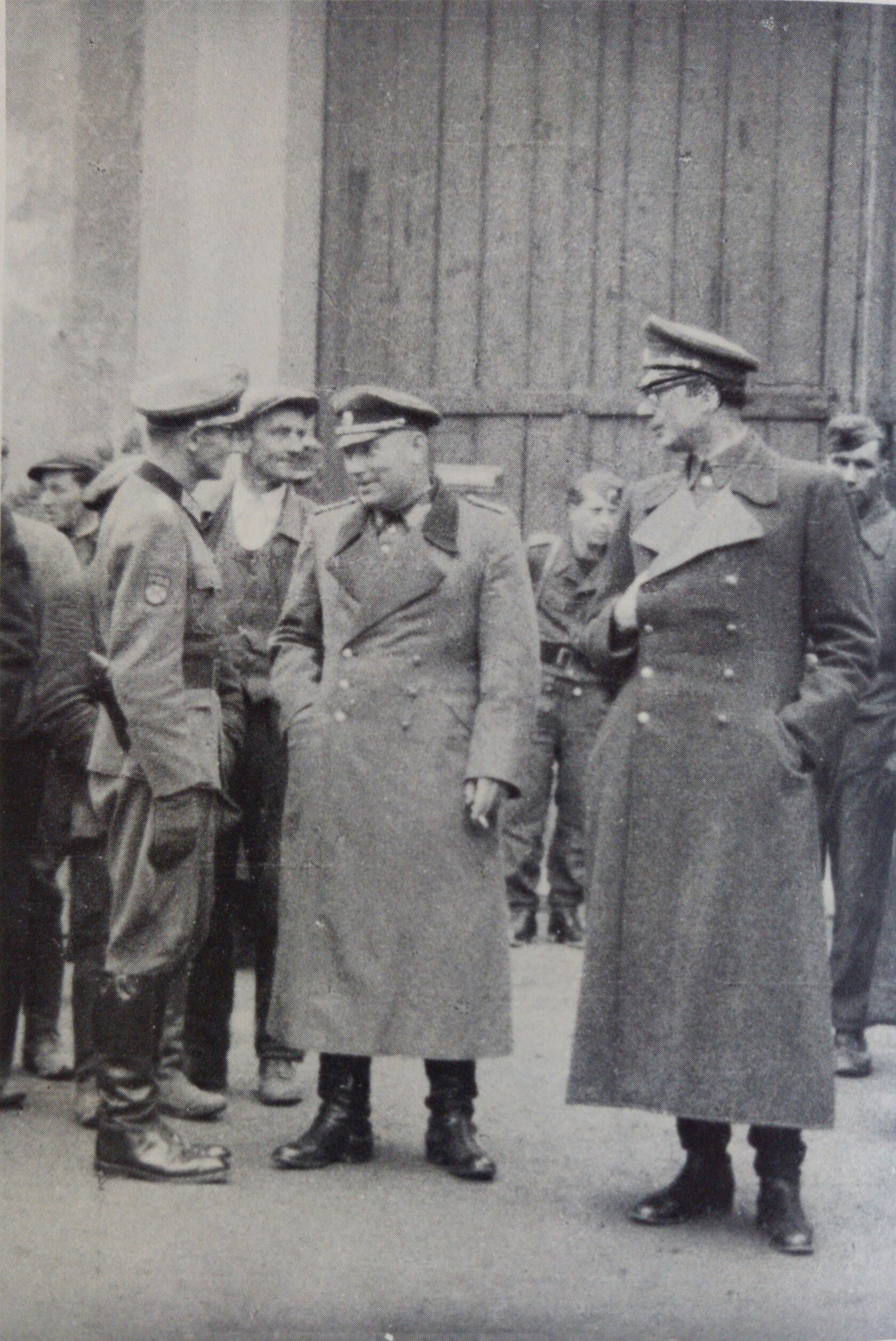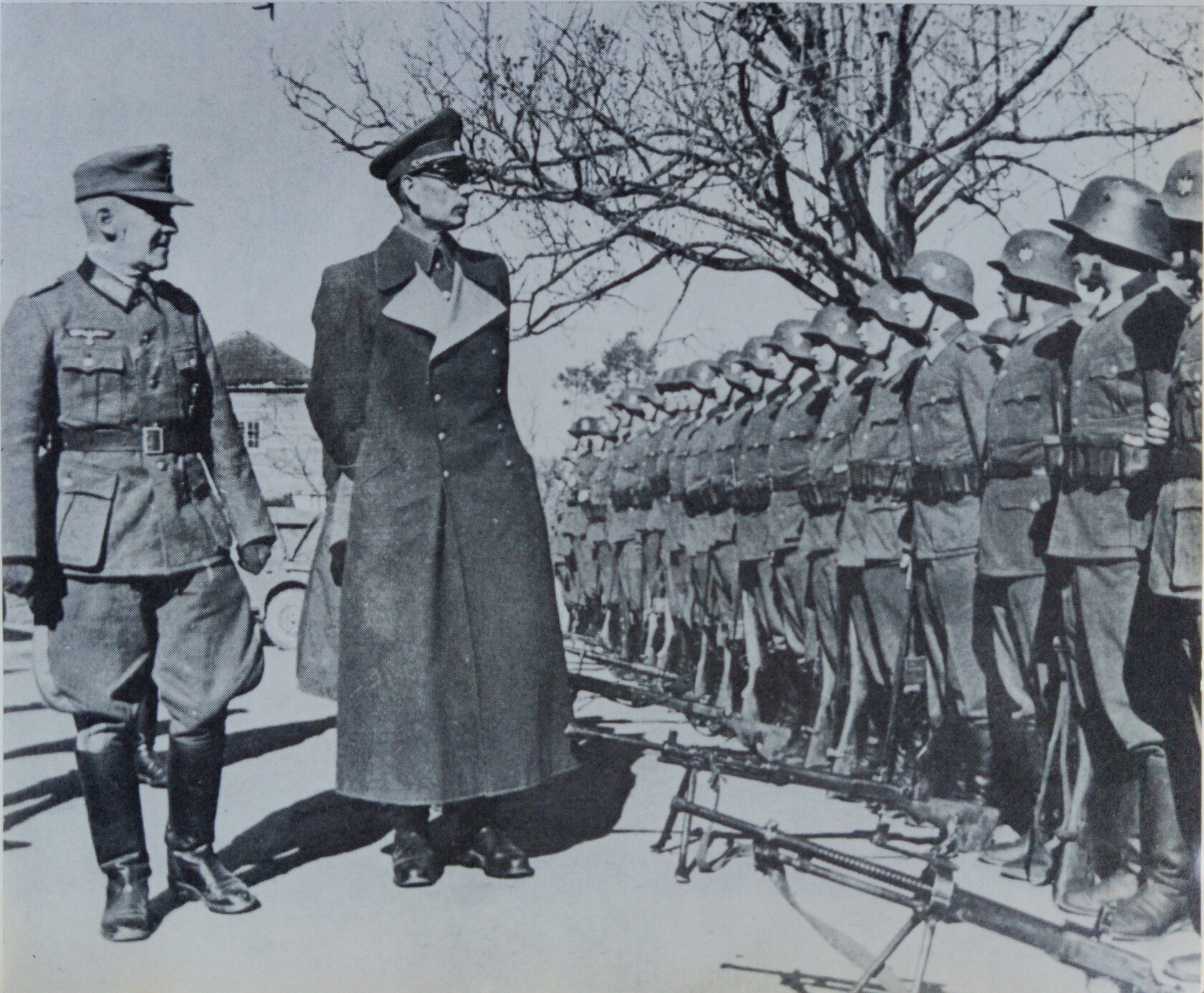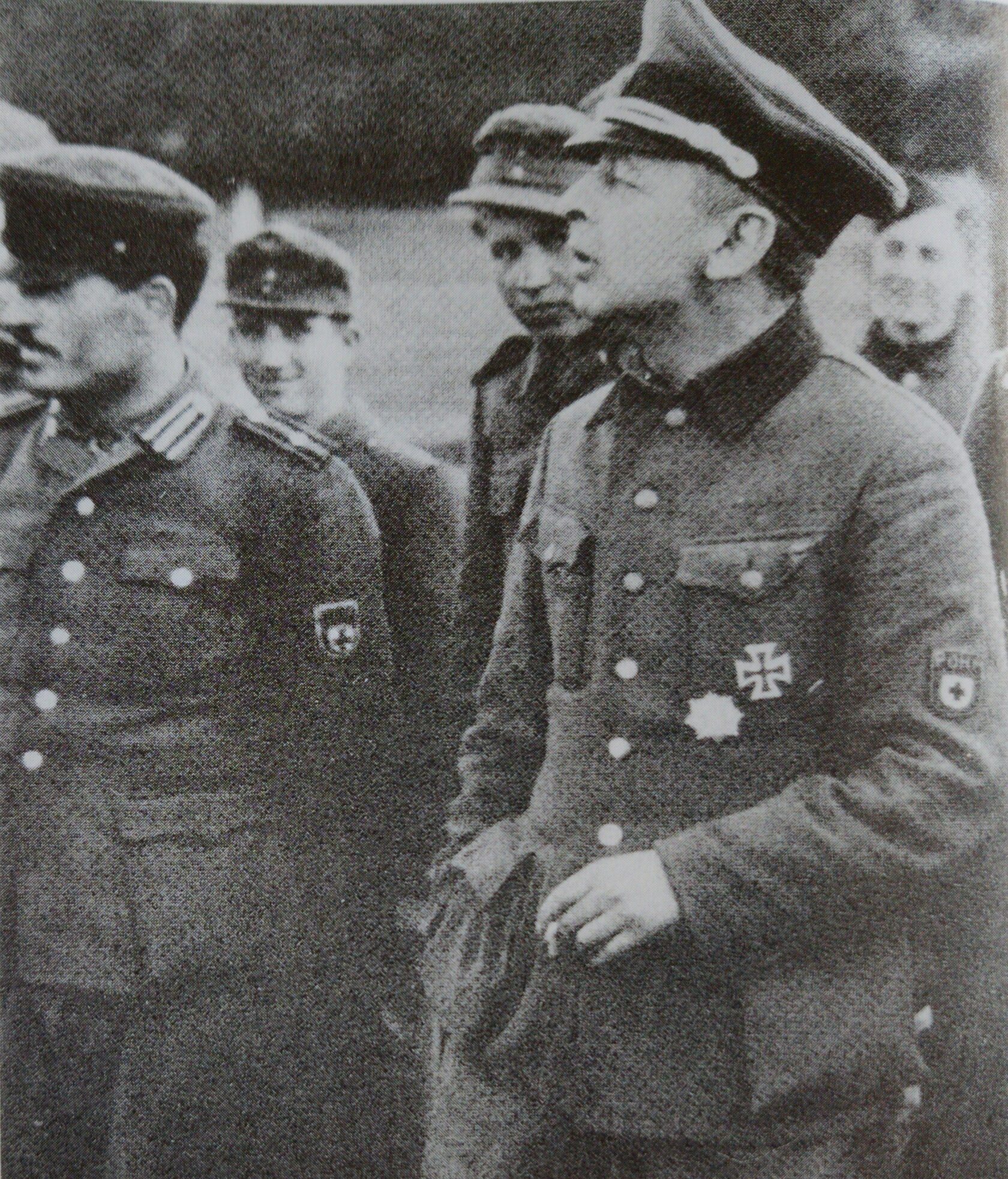When studying the period of collaboration with the Nazis, two pitfalls must be avoided. The first is to immediately assume that collaboration is equivalent to complete adherence to Nazi values and the Nazi project. One has to keep in mind the varied motivations of those who collaborated, distinguishing opportunistic collaborators from those who bought in completely. In the cases of the NTS and the ROVS, collaboration is best portrayed as a momentary alignment of their interests and a desire to use the Nazi regime to achieve their own ends.
The goal of both the NTS and the ROVS was to bring to fruition Ivan Ilyin's project of “irreconcilability,”¹⁰⁵ i.e., the need to fight, in every possible way, against what Ilyin considers the satanic evil: all things Soviet, including its people. By establishing a Manichean distinction between the “real” Russian people and the puppets of a satanic regime, Ilyin removed, with a stroke of the pen, all moral barriers and empathy that might discourage the murder of their fellow countrymen. When the struggle is presented in such a binary form, all means are legitimate to bring about the triumph of the good Russian people over the evil Soviets, even collaboration with Nazi Germany.
Thus, the murder, capture, and torture of the Soviet people by the Germans was seen as just one more step toward the Soviet-free future of which the NTS and the ROVS dreamed. It was one less thing that would have to be done once Germany turned the USSR into a puppet state and a White Russian was appointed as Gauleiter of the “new” Russia. If the NTS and the ROVS did not share the Nazi ideals, they nevertheless shared their dream of seeing Russia brought to its knees and the communist movement and people annihilated.
However, there is a difference between planning this project of enslavement on paper and taking the practical steps that it required in reality. How did they react when they witnessed the Nazi cruelty toward their Russian brothers? Indeed, the NTS and ROVS members were on the front lines to witness it: those who worked for the Ostministerium knew that the purpose of this ministry was to organize the Final Solution in the Eastern territories; those who managed recruitment in the POW camps witnessed the consequences of malnutrition, typhus, and forced labor on their fellow countrymen; those who took part in the militias on the front knew very well what the Einsatzgruppen, with which they collaborated, were for. There is no record of any moment of hesitation, questioning, or doubt about the usefulness of their collaboration—not even after the January 1942 Wansee conference, when the Nazis’ escalation of violence had reached its peak. If the White Russian ideology of irreconcilability and the National-Socialist ideology were two very different things, they nevertheless shared a total insensitivity to violence and cruelty toward people outside of their discriminatory communities.
The second pitfall to avoid when studying the period of collaboration with the Nazis is starting from the assumption that those who collaborated did so due to lack of choice, or under duress. It is true that, by remaining in Berlin after Hitler's accession to power in 1933, one's own survival became the number one priority, forcing one to make difficult choices.
However, the difference between a choice made under duress and a well-thought-out strategy is the level of zeal and personal involvement it requires. Indeed, the NTS members could have done like the other 600,000 “hiwis” (Hilfswilliger, or German auxiliary volunteers) and served in kitchens, stables, or even become cannon fodder in the German troops on the Eastern front. The trajectory of the members of the NTS, on the other hand, reveals a desire to climb the Nazi ladder: first recruited by Despotuli via the newspaper Novoe Slovo, they showed their desire to collaborate further and were transferred to Vineta’s propaganda production under Taubert. There, they were scouted by Rosenberg and put in charge of the administration of several POW camps. They seized control of the camp in Wustrau to train propagandists; that camp’s teaching staff was then recruited by Vlasov for his KONR project. This unique trajectory shows a will, at each stage, to gain responsibility, trust, and thus power. The history of the NTS should not exclude this key period of collaboration, because it reminds us of the very real consequences of Ivan Ilyin's ideology of irreconcilability and how far the slippery slope of dehumanization can take us.
The goal of both the NTS and the ROVS was to bring to fruition Ivan Ilyin's project of “irreconcilability,”¹⁰⁵ i.e., the need to fight, in every possible way, against what Ilyin considers the satanic evil: all things Soviet, including its people. By establishing a Manichean distinction between the “real” Russian people and the puppets of a satanic regime, Ilyin removed, with a stroke of the pen, all moral barriers and empathy that might discourage the murder of their fellow countrymen. When the struggle is presented in such a binary form, all means are legitimate to bring about the triumph of the good Russian people over the evil Soviets, even collaboration with Nazi Germany.
Thus, the murder, capture, and torture of the Soviet people by the Germans was seen as just one more step toward the Soviet-free future of which the NTS and the ROVS dreamed. It was one less thing that would have to be done once Germany turned the USSR into a puppet state and a White Russian was appointed as Gauleiter of the “new” Russia. If the NTS and the ROVS did not share the Nazi ideals, they nevertheless shared their dream of seeing Russia brought to its knees and the communist movement and people annihilated.
However, there is a difference between planning this project of enslavement on paper and taking the practical steps that it required in reality. How did they react when they witnessed the Nazi cruelty toward their Russian brothers? Indeed, the NTS and ROVS members were on the front lines to witness it: those who worked for the Ostministerium knew that the purpose of this ministry was to organize the Final Solution in the Eastern territories; those who managed recruitment in the POW camps witnessed the consequences of malnutrition, typhus, and forced labor on their fellow countrymen; those who took part in the militias on the front knew very well what the Einsatzgruppen, with which they collaborated, were for. There is no record of any moment of hesitation, questioning, or doubt about the usefulness of their collaboration—not even after the January 1942 Wansee conference, when the Nazis’ escalation of violence had reached its peak. If the White Russian ideology of irreconcilability and the National-Socialist ideology were two very different things, they nevertheless shared a total insensitivity to violence and cruelty toward people outside of their discriminatory communities.
The second pitfall to avoid when studying the period of collaboration with the Nazis is starting from the assumption that those who collaborated did so due to lack of choice, or under duress. It is true that, by remaining in Berlin after Hitler's accession to power in 1933, one's own survival became the number one priority, forcing one to make difficult choices.
However, the difference between a choice made under duress and a well-thought-out strategy is the level of zeal and personal involvement it requires. Indeed, the NTS members could have done like the other 600,000 “hiwis” (Hilfswilliger, or German auxiliary volunteers) and served in kitchens, stables, or even become cannon fodder in the German troops on the Eastern front. The trajectory of the members of the NTS, on the other hand, reveals a desire to climb the Nazi ladder: first recruited by Despotuli via the newspaper Novoe Slovo, they showed their desire to collaborate further and were transferred to Vineta’s propaganda production under Taubert. There, they were scouted by Rosenberg and put in charge of the administration of several POW camps. They seized control of the camp in Wustrau to train propagandists; that camp’s teaching staff was then recruited by Vlasov for his KONR project. This unique trajectory shows a will, at each stage, to gain responsibility, trust, and thus power. The history of the NTS should not exclude this key period of collaboration, because it reminds us of the very real consequences of Ivan Ilyin's ideology of irreconcilability and how far the slippery slope of dehumanization can take us.

With the first division of the KONR Armed Forces : Sakharov, Bunyachenko, Vlasov
From: Sven Steenberg, Vlasov, Alfred A. Knopf, 1970
From: Sven Steenberg, Vlasov, Alfred A. Knopf, 1970
Chapter Content
Conclusion
General Andrei Vlassov (center), reviewing his troops (Photo Ullstein)
From: Alain Guérin, Le général gris, Julliard, 1968
From: Alain Guérin, Le général gris, Julliard, 1968

Explore the networks, citations, and documents using the buttons on the right
Bronislaw V. Kaminsky (right, foreground) with RONA troops in Lebel, Northern Belarus (April 1944)
From: Nigel Thomas, Hitler’s Russian & Cossack Allies 1941-45, Osprey publishing, 2015
From: Nigel Thomas, Hitler’s Russian & Cossack Allies 1941-45, Osprey publishing, 2015

The White Russians as the Operational Force
behind the Nazis’ Policy in the East
behind the Nazis’ Policy in the East
Content Oriented Web
Make great presentations, longreads, and landing pages, as well as photo stories, blogs, lookbooks, and all other kinds of content oriented projects.

Content Oriented Web
Make great presentations, longreads, and landing pages, as well as photo stories, blogs, lookbooks, and all other kinds of content oriented projects.
Tilda Publishing
Appendix 1
NKVD document on Oleg Klimov
Appendix 2
Poland’s support for Georgian independence and anti-Soviet activities
Interwar Poland and the Intermarium Idea
Appendix 3
Appendix 4
Tilda Publishing
Georgian Collaborationism
Appendix 4
Tilda Publishing
Excerpts of Ruchenko memoirs
Appendix 5
Vineta Operation
Tilda Publishing
A report from the Kiev NKVD surveillance on Herman Strekker
Appendix 6


Content Oriented Web
Make great presentations, longreads, and landing pages, as well as photo stories, blogs, lookbooks, and all other kinds of content oriented projects.
